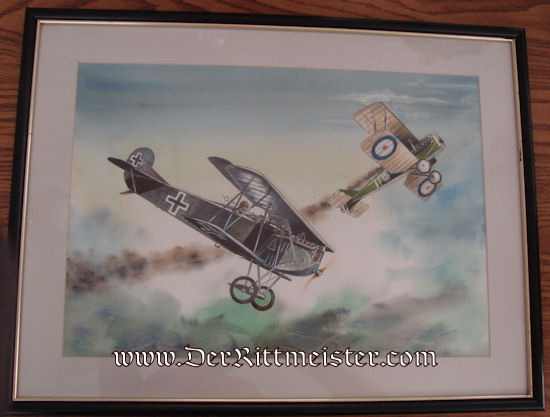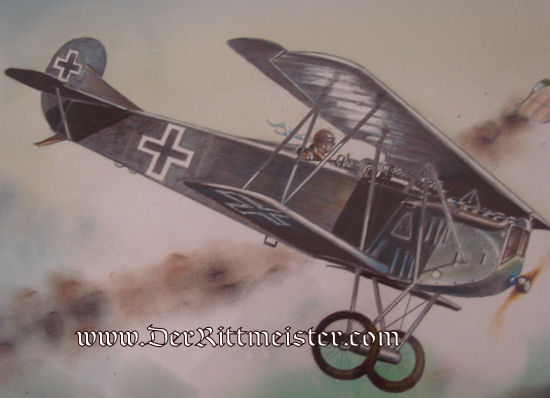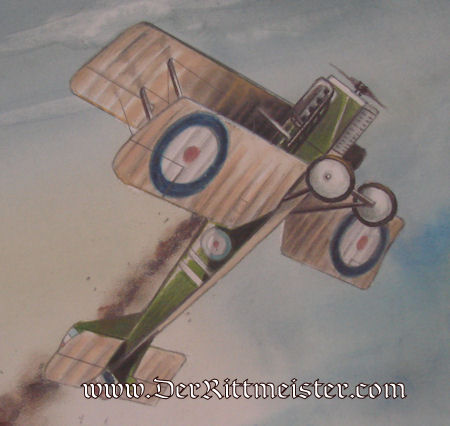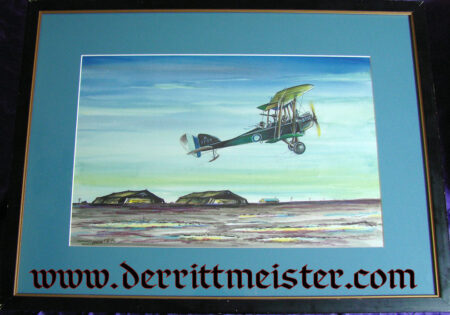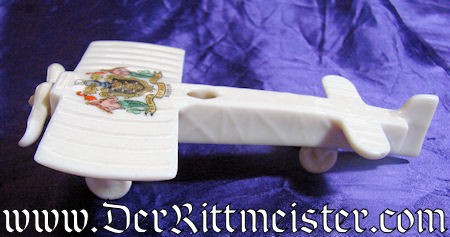Description
JACK D. HUNTER – ORIGINAL PAINTING – FEATURING FOKKER D. VII. SHOOTING DOWN BRITISH S. E. 5.
The late Jack D. Hunter was an amazing talent, and a good friend. One of my favorite “Jack” stories occurred when his first book (The Blue Max) was being prepared for publication. As was standard for first-time authors, Jack was informed that his dust jacket would be rendered in black and white (artwork AND color were too expensive for a writer without a proven sales record). Jack, however, told the publisher that HE would provide the artwork if the dust jacket was published in color. The publisher printed 5,000 (a first-time author’s standard run) hardback copies, in color, as The Blue Max’s first edition. It became a top-seller as soon as it was published, then quickly was snapped up and turned into a major motion picture starring George Peppard, James Mason, and Ursula Andress. Jack went on to write seventeen books before his 2009 death. In addition, he became a talented aviation artist whose work resides in museums’ and enthusiasts’ art collections all over the world.
Throughout his years as an artist, Jack produced paintings in two basic sizes. His more commonly-seen artwork was larger, while he occasionally produced a smaller size. Today we are offering the larger painting, which measures 19 ½” x 24 ½” within its frame. The simple, elegant, black, molded frame is accented by an inner, gold trim band, with a single, off-white matte providing a subtle contrast. The painting’s subject is a gray-colored Fokker D. V. II. The pilot looks on as his victim, an RAF S. E. 5, appears to be fatally hit. The S. E. 5. is zooming up and trailing a large plume of smoke. It is only a matter of time before the S. E. 5 noses down for his flight’s end. We cannot see the British pilot, so we cannot determine if he could still control his plane. Hopefully, he will be able to bring his plane to the ground the “easy” way.
Without a doubt, the Fokker D. V. II was the finest single-seater fighter aircraft that Germany produced during WW I. It replaced the Fokker Dr 1. and the Albatros D. V. as Germany’s front-line fighter plane. The D. V. II. was personally endorsed by Manfred von Richthofen. The airplanes started arriving at the front a month after his death. More than 3,300 examples were built. So deadly were they that the Versailles treaty required Germany to surrender all D. VII’s to the Allied authorities. It is said that the final commander of JG 1, Hermann Göring, ordered all of his planes to be destroyed rather than surrender them.
The S. E. 5 (Scout Experimental 5) first reached the front in March 1917, and more than 5,200 were built. The S. E. 5. and the Sopwith Camel were the best known British fighter planes.
Jack’s signature appears in the lower right corner. (The reverse does NOT display Mr. Hunter’s customary description of his painting’s action). Such a beautiful painting would make an outstanding addition to any collection.
